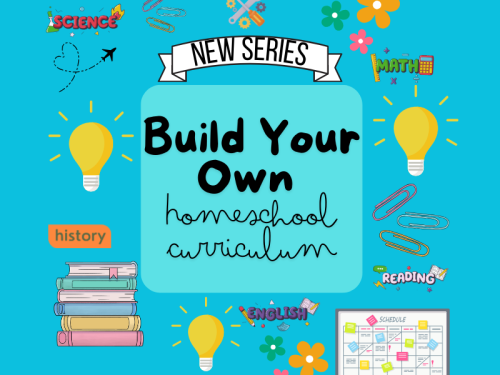The design of science lab experiments to be conducted by unsupervised students in a home environment often requires more attention to detail than the conceptually same experiments that would be conducted in a school on-campus laboratory. In on-campus labs, the instructor is readily available to clarify any instructions and answer questions. The absence of the instructor when students use a home LabPaq means that experiments must be designed to thoroughly cover essentially all possible contingencies. This must be done in such a manner as to not overburden the student with so much additional reading that the objectives of the experiment are marginalized in the process. The key to this problem is organization.
An organized approach to experiment design starts with identification of major areas of emphasis. A typical list of these would include:
1. Learning Objectives. What concepts does the lab present? Are there any physical manipulation skills that are important (use of a balance, pipette or other equipment)? Why the concepts that are presented important? In other words, provide context so that the experiment isn't just recipe-following. For instance, if the experiment involves investigation of Colligative properties, explain the connection with homemade ice cream, etc.
2. Procedures. The directions must be very detailed leaving nothing to chance. Images or drawings of equipment setup or techniques are most helpful for the home lab environment. Err on the side of too many! To avoid the procedures becoming just recipe steps, a technique that can be used is to imbed questions that lead the student to think about the relationship of what is being done to the concept(s) of the learning objectives. Simply inserting a “why?” question here and there goes a long way toward preventing the student from just mindlessly plodding through procedure steps. Footnote the questions with either explanations or leading material to a fuller explanation.
3. Safety. Besides general cautions (safety goggles, use of heat, etc.), the instructor must anticipate what can go wrong and provide appropriate cautions/instructions. Also, instructions should be included to guide the student insofar as possible for the unanticipated also. Hot liquids can splatter; glass can break, etc., so the cautions should also include provisions for the safety of other family members that may be nearby or actually observing the experiment being performed.
4. Waste disposal. Home lab experiments should not generate any hazardous waste, but students' still need instructions about how best to dispose of the waste that is generated. This is true even if the waste is something that is ordinarily found in the home. Students sometimes have difficulty noting that (for instance) baking soda for a food recipe is the same as the chemical sodium bicarbonate in a chemistry experiment!
5. Questions. Thought-provoking questions which develop critical thinking skills are key in cementing what the student did and observed to the concepts of the learning objectives. One question (or conclusion) that is recommended for all experiments is to ask the student how what was done/observed relates to each of the learning objectives. Many students have difficulty with this and some example(s) may be necessary to get them started. Questions may be imbedded in the procedure and/or at the end to tie everything to the learning objectives. Questions can be used to present ancillary material that is related to the objectives. Questions should be presented that reinforce lab safety, especially with an eye to what the student may have encountered in an on-campus lab. For instance:
“In this experiment you heated vegetable oil. If the oil were to have caught on fire, what might be adverse consequences of throwing water on the fire to put it out?”
“If you were doing this experiment in an on-campus lab and your lab partner got some of the acid splashed in her eye, what would you do?”
6. Reference for further study and bibliography. Be sure to provide attribution for all the sources used in preparing the experiment. This sets a good example for students. References to relevant context, if not otherwise incorporated in the body of the experiment, are a nice touch to direct students that may want to explore further on their own. Use of the World Wide Web as an information source should be encouraged (especially in an on-line setting), but the student should be instructed in how to critically assess the validity of internet sources.
Student frustration can be high in the absence of the instructor when performing lab experiments at home. When designing a science experiment for a home use LabPaq, an organized approach with great attention to detail can alleviate much of this and help the student obtain the desired learning outcomes safely and with a sense of accomplishment.
Dr. Paul Vorndam is one of the many distinguished professors who have developed home-based chemistry experiments for inclusion in LabPaqs® produced by Hands-On Labs, Inc. ( www.LabPaq.com ). Dr. Paul Vorndam received his Ph.D. in synthetic organic chemistry from the University of Colorado, Boulder in 1987. He served as Associate Professor and Deputy Department Chair for Chemistry at the U.S. Air Force Academy before joining Colorado Analytical in 1991 after leaving the Air Force. He subsequently became head of Quality Control at Sigma Chemical Company's C14 lab. In 1994 he joined the Chemistry Department at Colorado State University-Pueblo and retired from there in 2005 as Department Chair and Professor Emeritus. He taught at the U.S. Air Force Academy as a civilian Distinguished Visiting Professor from 2004-2006. He is currently the Science Division Chair for CCCOnLine and continues to work with Hands-On Labs, Inc. to develop effective science laboratory instruction tools. Dr. Vorndam lives in Rye, Colorado with his wife Margaret and enjoys playing bridge and mountain running.





